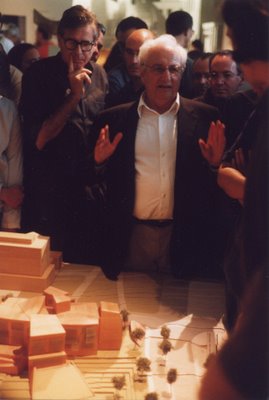Some locals to be featured in 2008 Whitney Biennial
Seven artists with New England ties – including two who live in Cambridge – are among the 81 artists who will be included in the 2008 Whitney Biennial, the New York museum announced yesterday.
The two Cantabrigians are filmmaker Robert Fenz, a Michigan native, and multidisciplinary dude Stephen Prina, an Illinois native and Harvard teacher, who splits his time between Los Angeles and Cambridge.
Other Biennial artists with local ties now all live elsewhere. They include Joe Bradley, who was born at Old Orchard Beach, Maine, and now lives in New York City; DJ Olive, a Boston native now based in New York; Heather Rowe, a New Haven native now based in New York; James Welling, a Hartford native now based in Los Angeles; and David Thorne, a Boston native now based in Los Angeles, who will be collaborating with Julia Meltzer.
The exhibition, which opens March 6, 2008, is being curated by Whitney curators Henriette Huldisch and Shamim M. Momin, and overseen by Donna De Salvo, the Whitney’s chief curator and associate director for programs. They have received guidance from Newton’s Linda Norden, an independent curator formerly at Harvard; Thelma Golden,director of The Studio Museum in Harlem; and Bill Horrigan, director of the media arts department at the Wexner Center for the Arts at Ohio State University.
The two Cantabrigians are filmmaker Robert Fenz, a Michigan native, and multidisciplinary dude Stephen Prina, an Illinois native and Harvard teacher, who splits his time between Los Angeles and Cambridge.
Other Biennial artists with local ties now all live elsewhere. They include Joe Bradley, who was born at Old Orchard Beach, Maine, and now lives in New York City; DJ Olive, a Boston native now based in New York; Heather Rowe, a New Haven native now based in New York; James Welling, a Hartford native now based in Los Angeles; and David Thorne, a Boston native now based in Los Angeles, who will be collaborating with Julia Meltzer.
The exhibition, which opens March 6, 2008, is being curated by Whitney curators Henriette Huldisch and Shamim M. Momin, and overseen by Donna De Salvo, the Whitney’s chief curator and associate director for programs. They have received guidance from Newton’s Linda Norden, an independent curator formerly at Harvard; Thelma Golden,director of The Studio Museum in Harlem; and Bill Horrigan, director of the media arts department at the Wexner Center for the Arts at Ohio State University.






